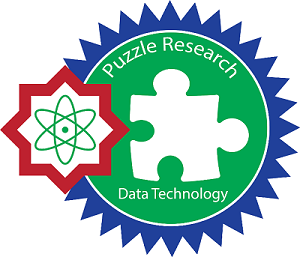ADDITIONAL MENU
Predicting Urban Happiness: A Comparative Analysis of Deep Learning Models
Abstract
This study explores the efficacy of various deep learning models in predicting urban happiness scores, a critical indicator of the quality of life in urban environments. Recognizing the complex interplay of factors contributing to urban happiness, we employed a suite of models, including Dense Neural Networks (DNN), Long Short-Term Memory networks (LSTM), Convolutional Neural Networks (CNN), Autoencoders, Multi-Layer Perceptron with Dropout (MLP Dropout), and Simple Recurrent Neural Networks (RNN), to analyze a comprehensive dataset encompassing environmental quality, socio-economic factors, and urban infrastructure. Our methodology centered on rigorous data preprocessing to ensure integrity and usability, followed by a detailed comparative analysis of model performances based on Root Mean Squared Error (RMSE) metrics. The results revealed that the CNN model outperformed others in identifying spatial patterns crucial for urban happiness, indicating its superior capability in processing complex urban data. In contrast, the LSTM model showed less accuracy, suggesting a nuanced understanding of temporal data's role in predicting urban happiness. This research not only sheds light on the potential of deep learning in urban studies but also offers valuable insights for urban planners and policymakers aiming to enhance urban living conditions. Through this comparative analysis, our study contributes to the growing discourse on leveraging advanced data analytics for urban planning and opens avenues for future research into the integration of diverse data sources and model hybridization to refine urban happiness predictions.
Keywords
CNN; Comparison; Deep Learning; LSTM; Urban Happiness
Full Text:
PDFReferences
J. Pykett, “Spatialising happiness economics: Global metrics, urban politics, and embodied technologies,” Trans. Inst. Br. Geogr., vol. 47, no. 3, pp. 635–650, 2022.
M. A. Nanor, M. Poku-Boansi, and K. K. Adarkwa, “Determinants of subjective wellbeing in rural communities: Evidence from the Juaben Municipality, Ghana,” Cities, vol. 113, p. 103140, 2021.
N. Biloria, “From smart to empathic cities,” Front. Archit. Res., vol. 10, no. 1, pp. 3–16, 2021.
L. Kang, Z. Yang, and F. Han, “The impact of urban recreation environment on residents’ happiness—based on a case study in China,” Sustainability, vol. 13, no. 10, p. 5549, 2021.
S. D. Luca, “Preferring or Needing Cities?(Evolutionary) psychology, utility and life satisfaction of urban living,” City, Cult. Soc., vol. 24, p. 100375, 2021.
M. W. Mehaffy, “Health and happiness in the new urban agenda: The central role of public space,” Sustainability, vol. 13, no. 11, p. 5891, 2021.
T. Yigitcanlar et al., “Artificial intelligence technologies and related urban planning and development concepts: How are they perceived and utilized in Australia?,” J. Open Innov. Technol. Mark. Complex., vol. 6, no. 4, p. 187, 2020.
M. Burry, “A new agenda for AI-based urban design and planning,” in Artificial Intelligence in Urban Planning and Design, Elsevier, 2022, pp. 3–20.
W. U. Jun, “The Fourth Paradigm: A Research for the Predictive Model of Livability Based on Machine Learning for Smart City in The Netherlands,” Landsc. Archit., vol. 27, no. 5, pp. 11–29, 2020.
Y. Huang et al., “GIS-Based Emotional Computing: A Review of Quantitative Approaches to Measure the Emotion Layer of Human--Environment Relationships,” ISPRS Int. J. Geo-Information, vol. 9, no. 9, p. 551, 2020.
R. Jaiswal and S. Gupta, “Money talks, happiness walks: dissecting the secrets of global bliss with machine learning,” J. Chinese Econ. Bus. Stud., pp. 1–48, 2023.
U. Ependi, A. F. Rochim, and A. Wibowo, “An Assessment Model for Sustainable Cities Using Crowdsourced Data Based on General System Theory: A Design Science Methodology Approach,” Smart Cities, vol. 6, no. 6, pp. 3032–3059, 2023.
A. Manimuthu, V. Dharshini, I. Zografopoulos, M. K. Priyan, and C. Konstantinou, “Contactless technologies for smart cities: big data, IoT, and cloud infrastructures,” SN Comput. Sci., vol. 2, no. 4, p. 334, 2021.
M. S. Syamili, T. Takala, A. Korrensalo, and E.-S. Tuittila, “Happiness in urban green spaces: A systematic literature review,” Urban For. & Urban Green., p. 128042, 2023.
N. Karimi, H. Sajadzadeh, and F. Aram, “Investigating the Association between Environmental Quality Characteristics and Mental Well-Being in Public Open Spaces,” Urban Sci., vol. 6, no. 1, p. 20, 2022.
H. Zhu, L. Shen, and Y. Ren, “How can smart city shape a happier life? The mechanism for developing a Happiness Driven Smart City,” Sustain. cities Soc., vol. 80, p. 103791, 2022.
A. R. Kunduru, “Machine Learning in Drug Discovery: A Comprehensive Analysis of Applications, Challenges, and Future Directions,” Int. J. Orange Technol., vol. 5, no. 8, pp. 29–37, 2023.
A. Padhi, A. Agarwal, S. K. Saxena, and C. D. S. Katoch, “Transforming clinical virology with AI, machine learning and deep learning: a comprehensive review and outlook,” VirusDisease, vol. 34, no. 3, pp. 345–355, 2023.
M. Pichler and F. Hartig, “Machine learning and deep learning—A review for ecologists,” Methods Ecol. Evol., vol. 14, no. 4, pp. 994–1016, 2023.
V. Tiwari, R. C. Joshi, and M. K. Dutta, “Dense convolutional neural networks based multiclass plant disease detection and classification using leaf images,” Ecol. Inform., vol. 63, p. 101289, 2021.
A. Sherstinsky, “Fundamentals of recurrent neural network (RNN) and long short-term memory (LSTM) network,” Phys. D Nonlinear Phenom., vol. 404, p. 132306, 2020.
A. Khan, A. Sohail, U. Zahoora, and A. S. Qureshi, “A survey of the recent architectures of deep convolutional neural networks,” Artif. Intell. Rev., vol. 53, pp. 5455–5516, 2020.
S. Saponara, A. Elhanashi, and Q. Zheng, “Recreating fingerprint images by convolutional neural network autoencoder architecture,” IEEE Access, vol. 9, pp. 147888–147899, 2021.
C. Zhong, H. Guo, I. Swan, P. Gao, Q. Yao, and H. Li, “Evaluating trends, profits, and risks of global cities in recent urban expansion for advancing sustainable development,” Habitat Int., vol. 138, p. 102869, 2023.
Y. Murayama and R. C. Estoque, “Urbanization: Concept, Mechanism, and Global Implications,” Hum. Geosci., pp. 261–282, 2020.
G. F. Randolph and C. Deuskar, “Urbanization beyond the metropolis: Planning for a large number of small places in the global south,” J. Plan. Educ. Res., p. 0739456X20971705, 2020.
S. Altaf, R. Asad, S. Ahmad, I. Ahmed, M. Abdollahian, and M. Zaindin, “A Hybrid Framework of Deep Learning Techniques to Predict Online Performance of Learners during COVID-19 Pandemic,” Sustainability, vol. 15, no. 15, p. 11731, 2023.
F. Li et al., “Towards big data driven construction industry,” J. Ind. Inf. Integr., p. 100483, 2023.
S. Zepf, J. Hernandez, A. Schmitt, W. Minker, and R. W. Picard, “Driver emotion recognition for intelligent vehicles: A survey,” ACM Comput. Surv., vol. 53, no. 3, pp. 1–30, 2020.
H. Boughanem, H. Ghazouani, and W. Barhoumi, “Facial Emotion Recognition in-the-Wild Using Deep Neural Networks: A Comprehensive Review,” SN Comput. Sci., vol. 5, no. 1, pp. 1–28, 2024.
Y. X. Zheng, K.-W. A. Chee, A. Paul, J. Kim, and H. Lv, “Electronics Engineering Perspectives on Computer Vision Applications: An Overview of Techniques, Sub-areas, Advancements and Future Challenges,” Cut. Edge Appl. Comput. Intell. Tools Tech., pp. 113–142, 2023.
S. Rokhsaritalemi, A. Sadeghi-Niaraki, and S.-M. Choi, “Exploring Emotion Analysis using Artificial Intelligence, Geospatial Information Systems, and Extended Reality for Urban Services,” IEEE Access, 2023.
P. Iamtrakul, S. Chayphong, P. Kantavat, Y. Hayashi, B. Kijsirikul, and Y. Iwahori, “Exploring the Spatial Effects of Built Environment on Quality of Life Related Transportation by Integrating GIS and Deep Learning Approaches,” Sustainability, vol. 15, no. 3, p. 2785, 2023.
L. Zhang and C. Kim, “Chromatics in urban landscapes: Integrating interactive genetic algorithms for sustainable color design in marine cities,” Appl. Sci., vol. 13, no. 18, p. 10306, 2023.
E. AI, “City Happiness Index 2024.” 2024.
DOI: http://dx.doi.org/10.24014/ijaidm.v7i1.28801
Refbacks
- There are currently no refbacks.
Office and Secretariat:
Big Data Research Centre
Puzzle Research Data Technology (Predatech)
Laboratory Building 1st Floor of Faculty of Science and Technology
UIN Sultan Syarif Kasim Riau
Jl. HR. Soebrantas KM. 18.5 No. 155 Pekanbaru Riau – 28293
Website: http://predatech.uin-suska.ac.id/ijaidm
Email: ijaidm@uin-suska.ac.id
e-Journal: http://ejournal.uin-suska.ac.id/index.php/ijaidm
Phone: 085275359942
Journal Indexing:
Google Scholar | ROAD | PKP Index | BASE | ESJI | General Impact Factor | Garuda | Moraref | One Search | Cite Factor | Crossref | WorldCat | Neliti | SINTA | Dimensions | ICI Index Copernicus
IJAIDM Stats










